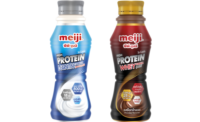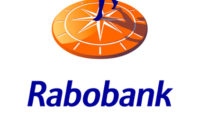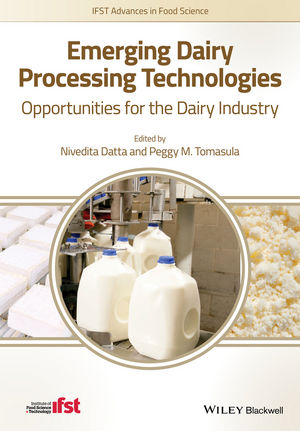Opportunity abounds for U.S. dairy proteins in Southeast Asia
USDEC programming in Singapore promotes protein quality and spurs innovation.
.png?1703091340)
Southeast Asia’s health-conscious consumers continue to pursue more power-packed nutrition. U.S. Dairy Export Council research shows many are unsatisfied with their protein intake, creating a growing opportunity for U.S. dairy proteins in an expanding array of innovative applications.
However, competition to provide protein to Southeast Asia is strong, and not just from dairy companies. Plant-based protein products, while still niche, are increasing, and so is misinformation, which is why the U.S. Dairy Export Council has held a series of workshops to enhance understanding of U.S. dairy proteins by customers and key opinion leaders.
At USDEC, we pave the way for our member companies to succeed. We know that if exports of value-added dairy proteins increase, the entire U.S. dairy industry will benefit. Differentiating what the U.S. offers is vital, which is my focus as USDEC’s Senior Vice President of Global Ingredients Marketing and Director USDEC Singapore Ltd.
Among other things, we conduct market research for members, provide on-the-ground expertise from our Southeast Asia office and offer educational workshops for Southeast Asian food and beverage manufacturers at the U.S. Center for Dairy Excellence (U.S. CDE), our state-of-the-art learning center in Singapore.
Martin Teo, the Technical Director of Food Applications at USDEC’s Singapore office, says demand for protein-enhanced beverages is growing across a broad range of consumers, including those interested in muscle development and weight management. He also sees increasing interest in dairy proteins to enhance healthy and active aging.
U.S. dairy protein ingredients such as whey protein concentrate (WPC) and isolate (WPI), as well as milk protein concentrate (MPC) and isolate (MPI), offer a formulator-friendly complete package of nutritionally high-quality protein. U.S. dairy proteins also offer multifaceted functionality, a neutral flavor profile and wide usage versatility across diverse applications such as beverages, snacks, soups, sauces, and desserts.
Key functional properties include high solubility, water-binding, gelation, thickening, foaming and emulsification.
A Southeast Asia Beverages Landscape Study commissioned by USDEC examined "The Big Six" Southeast Asian countries of Singapore, Vietnam, Malaysia, Philippines, Thailand and Indonesia. The study confirmed that demand for high-quality protein is strong but not being fully met. More than one-third of consumers in the region said they are "not highly satisfied" with their current protein intake.
Among countries, dissatisfaction ranged from 51% in Singapore to 27% in Indonesia.
The situation is ripe for U.S. food formulators to develop new products or reformulate items with added protein for health. Consumers want high-protein and protein-fortified options for their snacks, meals, beverages and other categories.
With a population of well over 600 million people and a combined gross domestic product (GDP) of over $2.6 trillion, Southeast Asia is primed to increase spending for years to come on nutrition. U.S. dairy export value to Southeast Asia rose 22% to a record US$1.68 billion in 2022. In volume terms, the region is the No. 2 U.S. market for nonfat dry milk/skim milk powder and lactose, the No. 4 market for high-value, high-protein WPC and a top 10 market for cheese.
Southeast Asia is home to some of the world's fastest-growing economies. This rapid growth has translated to increased prosperity and urbanization, leading to a surge in consumer spending. Rising household incomes paired with evolving diets and busier lifestyles continue supporting bright dairy demand prospects.
USDEC's Southeast Asia office conducted four back-to-back activities in Singapore in September, highlighting why protein quality matters and why U.S. dairy proteins are the ideal choice regarding nutrition, functionality and innovation. Three of the four events occurred at USDEC’s U.S. Center for Dairy Excellence, reinforcing its stature as a prominent dairy learning destination, ideation hub and collaboration space in Southeast Asia.
"It is critical in today's landscape to educate and advocate for what constitutes healthy eating to help everyday consumers make the right decisions," Dali Ghazalay, regional director of USDEC Southeast Asia, told attendees.
A highlight of one workshop was a protein beverage development challenge. Beverage manufacturers attending split into four groups to create a protein beverage focusing on specific target markets: teens, healthy agers, weight management/meal replacement seekers, and active young adults.
Each group presented its product concept to all participants, with Teo in charge of judging. The winning group brainstormed a no-sugar-added, vanilla-flavored milk drink called “Golden SoSure”. The product was made with MPC80 and WPI, offering 15g of protein per serving, along with probiotics, calcium and potassium.
Kristi Saitama, USDEC vice president of Global Ingredients Marketing, noted: "It was a sign of success that participants kept repeating that proteins are not all created equal. They recognized how dairy proteins stand out distinctively from other protein sources regarding protein quality."
Twenty key opinion leaders from Southeast Asia gathered at another U.S. CDE half-day workshop. The aim was to create ambassadors in Southeast Asia who could communicate the science-backed advantages of U.S. dairy proteins in meeting daily nutritional requirements.
The workshop pointed out that plant-forward diets do not have to eliminate animal-based foods. On the contrary, both can play a complementary role in optimizing nutrition.
The USDEC-sponsored activities strengthened U.S. dairy's strong reputation as a committed supplier to Southeast Asia.
According to USDEC research, nine out of 10 SEA dairy importers say they are satisfied with the U.S. as a supplier.
Through marketing initiatives, trade shows, and educational programs, USDEC is actively engaging with key Southeast Asian stakeholders to raise awareness about the advantages of U.S. dairy proteins. By building solid relationships and partnerships, we are sending the message that U.S. dairy proteins are the ideal choice for nutrition in the region. For more Southeast Asia regional details visit https://USdairyExcellence.org/ and follow the US CDE on Instagram @ThinkUSAdairy.
Looking for a reprint of this article?
From high-res PDFs to custom plaques, order your copy today!









